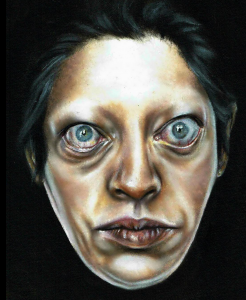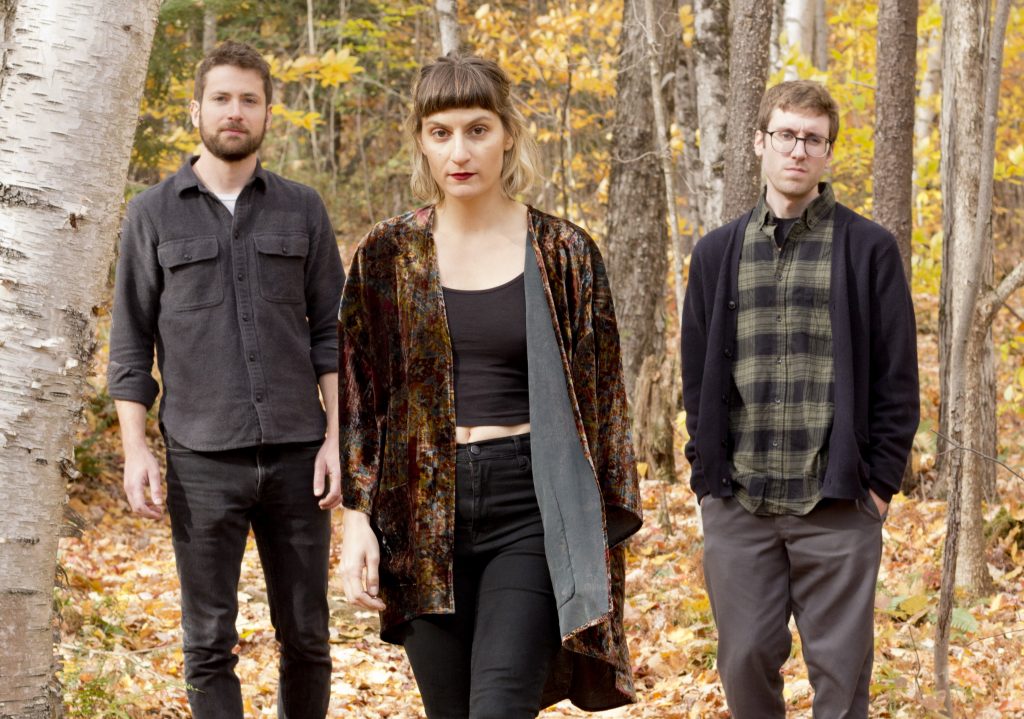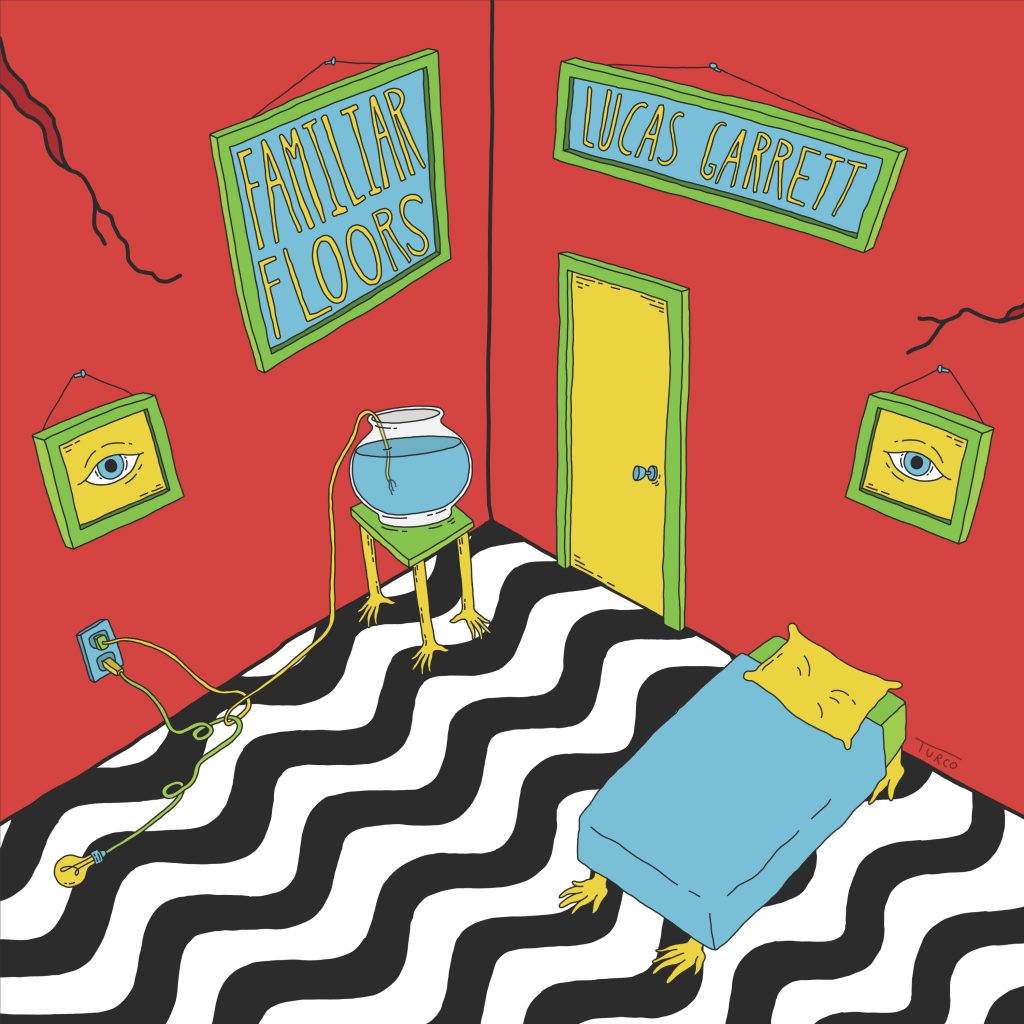Alan Wilson Watts said that, “through our lives, the universe perceives itself.” And this perceiver believes that through creativity, the universe speaks to us. And rarely, we find people who seem to have no limit on the creative roads they can travel. Their universes are multilingual.
Tara Rule is just such a person. She’s an artist, filmmaker, musician, and model. What she envisions, she brings out into the world, and the world is better for it.
We sit down with Tara and discuss dark matter flashlights.
RRX: When I interview people, often is the case that I find little about what they do, or have done, on the web. But you’ve done so much. Seven films, including twelve in post, commercials, albums, live performances – and my list of mentionables does no justice. Of everything you’ve done so far, how would you cut the list to fit on a business card?
TR: To be honest, that’s why I don’t have a business card, haha. If I had to have one at this point, I think I’d pretty much stick to the actress/filmmaker angle, since that’s what I’ve been focusing on almost exclusively lately. As much as I love creating art and music, trying to turn that into a “business” for myself was incredibly challenging. Art and music are what I use for an emotional outlet, and I can only seem to create them when I’m in a bad place emotionally – as pretentious as that sounds. I’ve tried painting when I’m in a good spot and I just can’t do it. Art and music are two things that help me cope, so once they became a job, they became just as stressful as anything else and then I had no outlet to fall back on. Luckily, acting and filmmaking for me – especially film making – are the best of both worlds. I can do both every day for the rest of my life and be completely content. Both are an emotional outlet for me, but also structured enough to where I can mentally handle doing either as a career.
RRX: In your films, also in at least one of your albums, you’ve worn all hats. And to a broader sense, you’re a very Renaissance figure. You do it all. I do some, and I know that over my creative time I hover between a writer who does art to an artist to writes to a musician that does both. Do you have a creative base persona like that?
TR: If you asked other people, they’d probably say that I do have some kind of creative base persona, but in my own mind, I don’t know if I consider myself to have one. Now that I’m thinking about it, at my core I probably am a creative type, I guess I’ve just never thought about it too much. It’d be hard for me to choose just one creative thing to associate myself with since there are so many things outside of the creative realm that I tend to get obsessive over- sometimes I get really obsessed with writing, sometimes it’s research or woodworking. Right now it’s fitness training, I’m sure next year at this time it will be something else. I think a big part of not considering myself to have a creative persona has to do with the social aspect. Even though I like to spend the majority of my time alone, I really like people. In the past I’ve found that if I’ve introduced myself to new people as the “artsy” type, people have been less likely to want to get to know me. The majority of my friends aren’t the “creative type”, and when I’ve asked them why they were standoffish initially, they said it was because they felt we wouldn’t have anything in common.
RRX: Film is expensive. Or it was; the cost has surely come down now. But the group required to put out a good film is bigger than, say, a band. It’s pretty much a community. You’ve done so many films, on both sides of the camera. And you’ve done albums. Is there any comparison here?
TR: There’s definitely a comparison as they both have essentially the same pro’s and con’s in my mind depending on how involved I am in either an album or a film. If I’m just a contractor in a production that I’m not responsible for – such as a film I’m only acting in or an album I’m only featured on – there’s much less stress since I am not responsible for funding, production, scheduling, etc. The downside is that I have less creative license, but not having full creative license is nice too at times, because I get to express myself creatively in a way that I wouldn’t have come up with on my own. I find film work – whether in front of or behind the camera – is much more socially enriching than working on an album. On a film set or a live production, you become close with the people you’re working with very quickly since you’re all together 24/7. You share the same highs and lows for the most part. I find creating an album on my own to be very isolating. Even working on an album with others feels less intimate – it’s just you, alone in a glass booth, while everyone else stares at you. Even if you have that high moment of getting a great take, being in a separate space just isn’t the same. It’s like visiting someone in prison and talking to them on a phone with a pane of glass between you – it’s just not the same as having the same conversation in the park.
RRX: On your site, it says that you worked a controversial portrait project as a way to cope with living with a rare, chronic, terminal illness. And this is, to me anyways, the real source of creativity, when we translate our inner selves and give that to the world. Can you explain this project, and how you started it?

Artwork by Tara Rule.
TR: When I created the portraits, I never had any intention of creating a project or series, it was something that sort of manifested itself somewhere along the line. Prior to falling ill, I was decent at art. I always liked to draw and paint, and I was good I suppose, but my work certainly couldn’t have gotten into any sort of gallery, I can tell you that much. With the encephalitis, many parts of my brain became so damaged they became permanently inactive. Before I even properly re-learned how to walk, talk, read, and write, I decided to try to paint again. It was as if I could suddenly perceive visual stimuli in a new way. I suddenly understood how to transpose what I was seeing onto a piece of paper in a way I never could before. Just like having to make new connections in my brain in order to walk again, I think parts of my brain became much more active to compensate for the damage – that’s the only explanation I have to suddenly have the ability to paint the way that I do or play the piano out of nowhere. The portraits were personal to me, but after some encouragement from close friends and family members, I decided to share them. It took me a long time to realize that the portraits represented the fear and pain I was experiencing due to an illness that was at the time deemed terminal. When they first started circulating art shows and galleries, they were taken down early a number of times due to complaints of the portraits being too “graphic”. I thought it was so cool that an image that isn’t classically graphic in nature – no gore, nudity, or explicit content – could have such an impact on people. It helped me realize just how painful going through all of that was. I’ve tried to create more portraits for the series since I’ve been well and I can’t – they don’t have the same look or feel at all. I think that’s the coolest part about it. It’s a snapshot of the most painful time in my life, and the fact that I can’t recreate it is the biggest blessing there is.
RRX: Before the Fern is a film that you did a lot on. You wrote, directed, produced, edited, and composed, and it made it to network. Was it was hard to perform all of those roles, or would it have been harder to hand some of those duties to someone else? Was the decision to take all that on creative, or a matter of budget?
TR: 90% of the reason I took on everything for Before the Fern was budgetary concerns. I knew it would be cheapest to do it all myself. I also wanted to learn everything there was. I wanted to be the cast, crew, pre- and post-production staff all at once. A few weeks prior, I was the second cinematographer for Girl in the Palms, (currently in post-production) and I had never been behind a camera a day in my life. My good friends Tracy and Jon Cring believed in me when I showed interest in cinematography and gave me the opportunity of a lifetime. I fell in love with cinematography and filmmaking immediately, but I wanted to make sure that this love wasn’t some kind of honeymoon phase with a new creative interest. It felt right, but I wanted to make sure, so I went all in. When I asked Jon and Tracy how to become a filmmaker, they told me to never stop making films, because you can lose the spark. I was terrified to lose the one thing that ever felt right to me, so I didn’t have time to plan out getting a crew together. Two weeks later, I was on a plane to Florida. And yes, it was incredibly difficult to do everything on my own.
RRX: There’s an ineffable power to creativity, and I feel that people like you are just radiators of it. To go a little New Agey here… Is there a vision, no matter how weird, or a mantra, or any token thing that you envision as central to wielding your own creativity? You could call it your ‘muse,’ but it doesn’t have to be. What is your axis?
TR: Being creative for me isn’t only just the thing that makes me happiest in life, it’s necessary for my own survival. I know that sounds gauche – but it’s true. Doing creative things keeps me out of trouble and keeps me grounded. It keeps me from being self-destructive. I’ve had trouble throughout my life with regard to giving too much of myself to others and losing myself somewhere along the way. My art, or whatever you want to call it, is a part of me that is so precious, I won’t let anything get in the way of it. I can’t create if I’ve given every bit of myself away to the point that I don’t exist. It reminds me to love myself first, so I can do what I love.
RRX: This is where you answer the question I forgot to ask. Fast or slow zombies? Can cranberry sauce: keep or chuck? Educate, enlighten, emote – the floor is yours.
TR: Since I don’t know quite where to start, I’ll start with your questions. 1. Fast zombies. Zombies ate my neighbors would have been way too easy otherwise. 2. Cranberry sauce is good for maybe one or two days covered in the fridge. I like it a lot. I used to dislike the chunky kind, but it’s grown on me over the years. 3. In closing, I guess it’s less of an answer than a thought – Sometimes, even when all hope is gone and all the odds are stacked against you, even when science tells you that there’s a 100% chance things will only get worse from here, give yourself six months and really push to find a different answer before giving in. Sometimes you’ll get lucky and make it out alive and have a life you never thought could exist. It might even be so good that you’re sometimes convinced you must have died somewhere along the way and you’re in some sort of afterlife or superior dimension. You might get lucky. I did.
Author
Staff
You may also like
Continue reading





 RadioRadioX
RadioRadioX